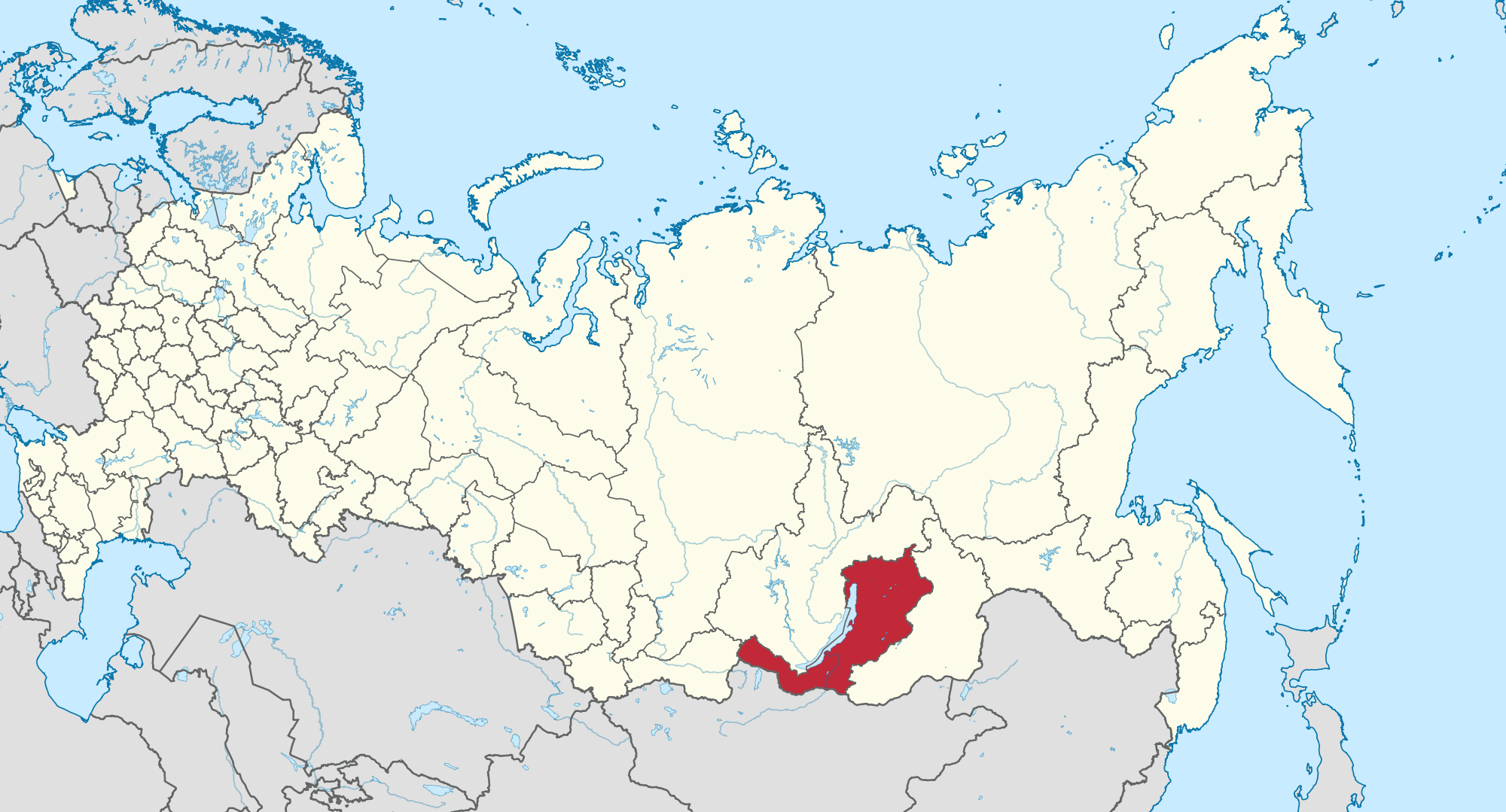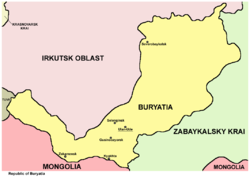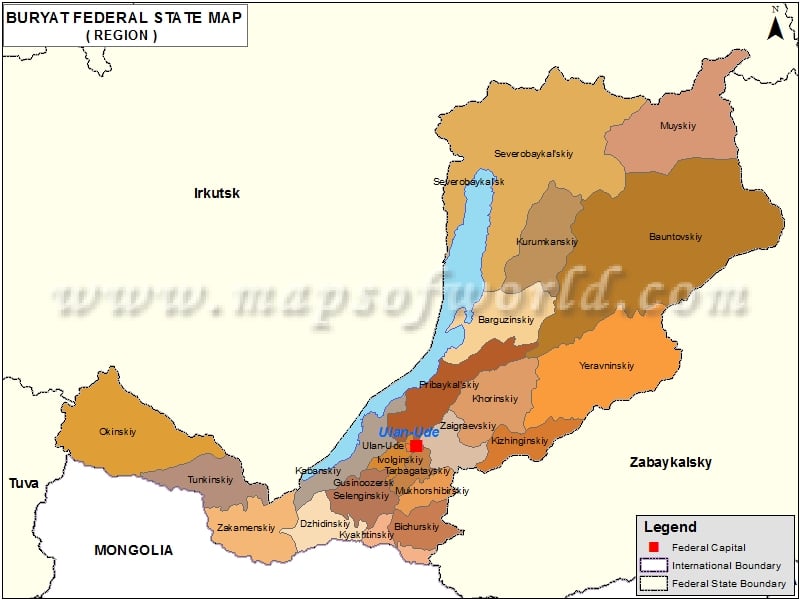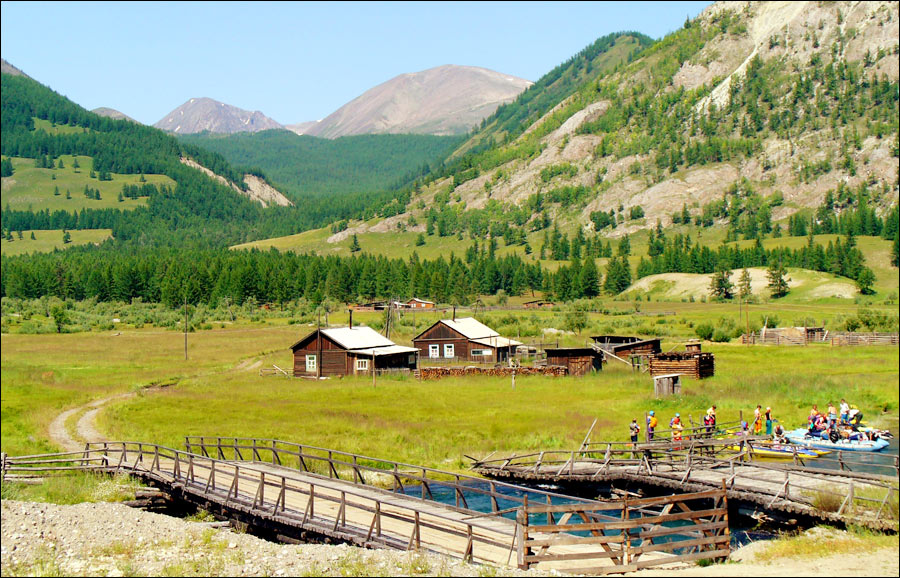Buryatia
53.5110Koordinaten: 53 ° 30 'N, 110 ° 0' O
Buryatia (Russian Бурятия / transcription Burjatija, Buryat Буряад Республика ) is a republic in Russia.
Geography
Buryatia is located in the Siberian federal district on the border with Mongolia. It comprises the eastern shore of Lake Baikal and extends to the Jablonowygebirge. The main rivers of the Republic are the Selenga River, the Upper Angara and the Bargusin.
Population
Titular nation, the Buryats. In the 2010 census 972 021 inhabitants were determined. Of these, 30% are the Buryats and Russians 66%. Other major ethnic groups are the Ukrainians and the Tatars. From the " indigenous peoples of the Russian North " live mainly in the north of the Republic 2,974 Evenki. In Sayan on the upper reaches of the Oka in the extreme southwest of the Republic is the settlement area of the small Turkic-speaking people of the Soyots, of which 3,579 live here.
4 17,019 persons were no ethnic group are allocated. These people probably spread proportionately the same as the fed different ethnic inhabitants.
The official languages are the Buryat language and the Russian language.
The Buryats are committed primarily to Buddhism ( Vajrayana or Lamaism ). Buryatia is the center of Tibetan Vajrayana Buddhism dominated in Russia; there are some monasteries.
Administrative divisions
Buryatia is divided into two urban districts and in 21 Rajons ( counties ).
See: Administrative divisions of the Republic of Buryatia
Cities and urban settlements
The capital city of Ulan-Ude is the only major city. By far Sewerobaikalsk, Gussinoosjorsk and Kjachta follow. Altogether there are six cities in the Republic and 14 urban-type settlements.
History
The Buryats were part of the Mongol Empire of Genghis Khan, which also continued after his death had there stock. From the construction of a Cossack fortress in 1666 between the two rivers Uda and Selenga emerged originally Russian city Werchne Udinsk, which was later renamed in Ulan- Ude. The construction of the Trans-Siberian Railway, the economic growth of the region began. 1923, the Buryat Autonomous Soviet Socialist Republic ( ASSR ) was formed. Before there was a strong movement in Buryatia to unite the area with Mongolia. With the end of the Soviet Union, Buryatia declared as sovereign and in 1992 was autonomous republic within Russia. President of the Republic Vyacheslav Nagowizyn.
Transport and the economy
By Buryatia the Trans-Siberian Railway runs. The region is one of the well-developed in Siberia and is rich in mineral resources. Mining, timber industry, but agriculture are the major economic sectors.






.png)



